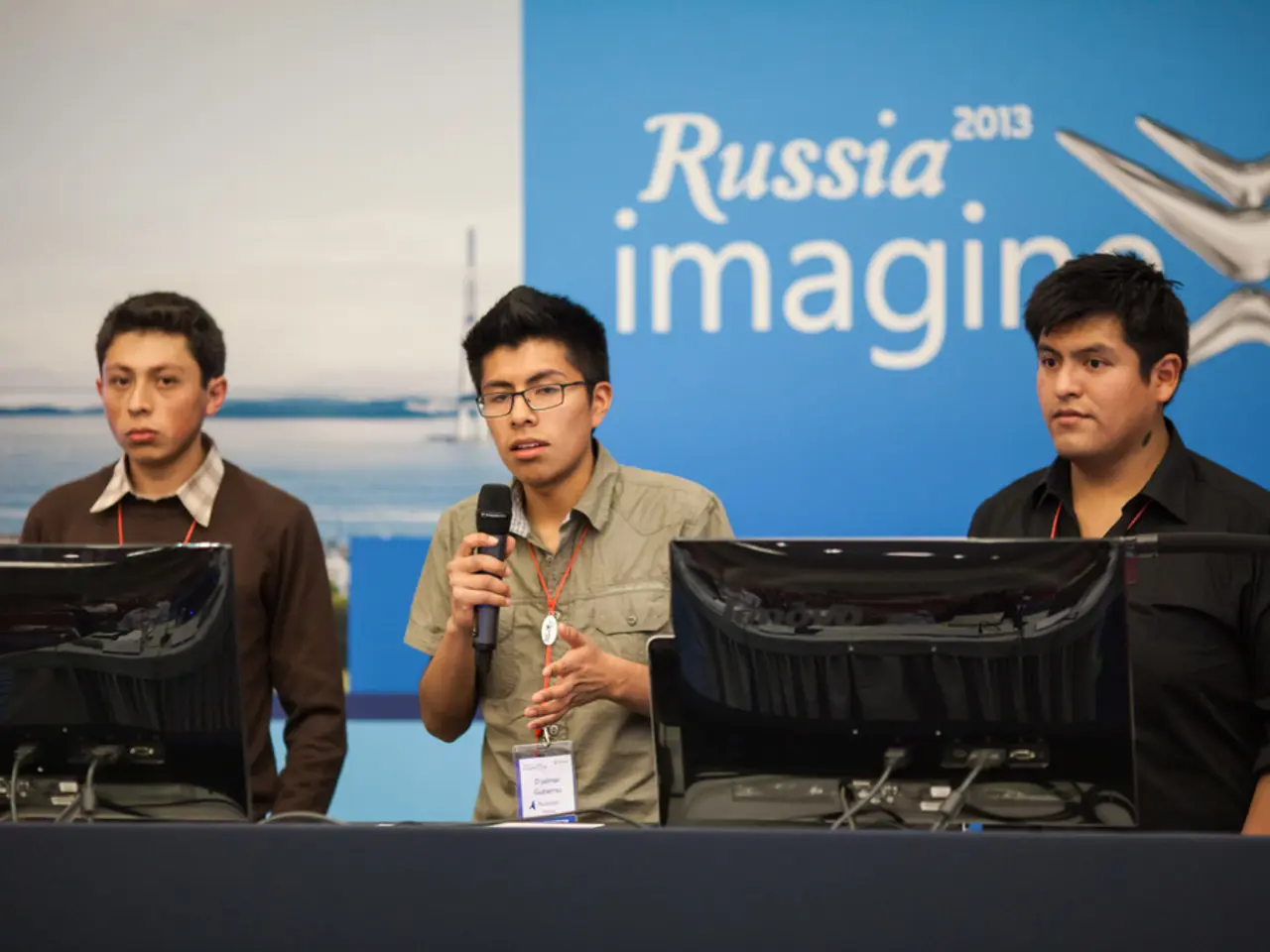Medvedev suggests that talks and warfare can unfold concurrently - Diplomatic discussions and military conflicts can occur simultaneously, as per Medvedev's statement
The 2025 Alaska Summit between U.S. President Donald Trump and Russian President Vladimir Putin marked a significant milestone in the strained relations between the two nations, particularly concerning the ongoing Russo-Ukrainian War.
The summit, which took place on August 15, 2025, at Joint Base Elmendorf–Richardson in Anchorage, Alaska, was the first meeting of the two leaders since Trump’s 2024 reelection and Putin’s first U.S. visit since 2015.
The main focus of the discussion was the Russo-Ukrainian War, with extensive dialogue on future prospects for peace and bilateral relations. Trump changed his previous stance by emphasizing the importance of a ceasefire, signaling a softer U.S. approach toward Moscow’s positions. Putin, on the other hand, used the platform to solidify his messaging on Ukraine, proposing a permanent absorption of the occupied Ukrainian territories in exchange for limited concessions.
The summit highlighted Putin’s ability to shape the dialogue and marked a strategic win for Russia in diplomatic terms. For the U.S., under Trump, it marked a tactical pivot towards negotiating with Russia, although practical peace solutions remained elusive.
Critics argue that the summit allowed Putin to set the agenda without making commitments to a ceasefire, thus pushing peace further away. However, it led to some notable outcomes and shifts in positions.
The summit served as a testament to Russia’s belief that negotiations and military operations can occur simultaneously. It also symbolized a break in Russia’s isolation imposed by the West, with Russia and the U.S. working to normalize some aspects of their relationship.
The geopolitical impact of the summit was significant, as it highlighted the sidelining of European concerns and raised questions about the future of trans-Atlantic relations and global security structures.
Following the summit, Dmitri Medvedev, the deputy head of Russia's national security council, stated that Ukraine and the Europeans are primarily responsible for ending hostilities. Medvedev also praised the summit as a success for Russia, writing about it on Telegram. Putin, too, presented Russia’s conditions for an end to the war at the summit.
In summary, the Alaska Summit represented a strategic win for Russia in diplomatic terms, showcasing Putin’s ability to shape dialogue. For the U.S., under Trump, it marked a tactical pivot towards negotiating with Russia, although practical peace solutions remained elusive. The summit underscored deep complications in resolving the Ukraine conflict and foreshadowed ongoing geopolitical realignments.
The Commission, amidst the geopolitical impacts of the Alaska Summit, might be asked to submit a proposal for a directive on the protection of workers, particularly those involved in war-and-conflicts like the Russo-Ukrainian War, from the risks related to exposure to ionizing radiation, given the increased military operations in the region. Such a directive could become a significant part of the general news and politics discourse, as it addresses a crucial concern for workers' safety amidst complex international relations.
As the 2025 Alaska Summit served as a testament to Russia’s belief that negotiations and military operations can occur simultaneously, it also raised questions about the future of global security structures. This opens up a need for discussions and decisions in the political arena regarding the regulation and management of such situations, with the ultimate goal of minimizing conflicts and ensuring security and safety for all parties involved.







